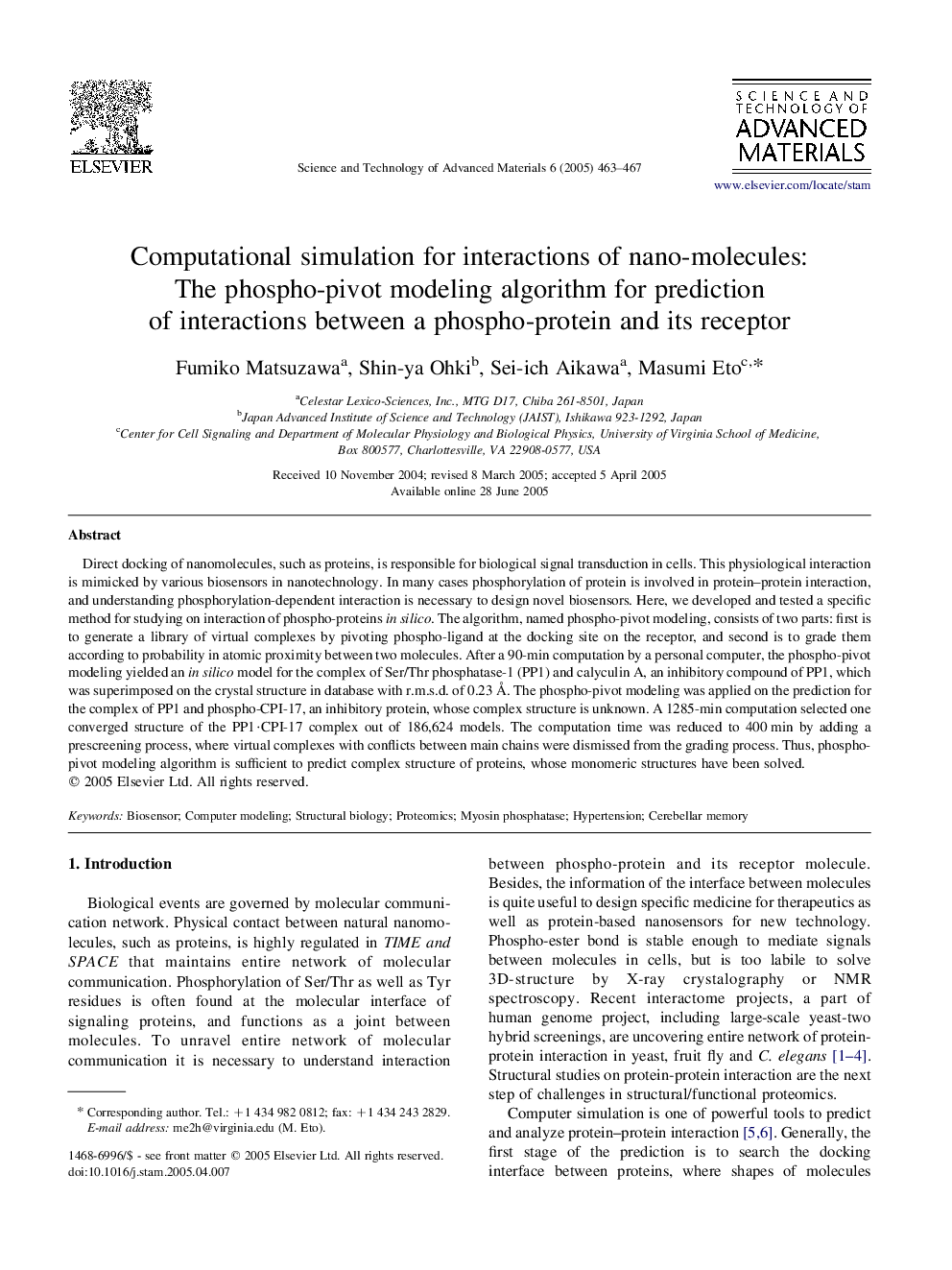| Article ID | Journal | Published Year | Pages | File Type |
|---|---|---|---|---|
| 9801372 | Science and Technology of Advanced Materials | 2005 | 5 Pages |
Abstract
Direct docking of nanomolecules, such as proteins, is responsible for biological signal transduction in cells. This physiological interaction is mimicked by various biosensors in nanotechnology. In many cases phosphorylation of protein is involved in protein-protein interaction, and understanding phosphorylation-dependent interaction is necessary to design novel biosensors. Here, we developed and tested a specific method for studying on interaction of phospho-proteins in silico. The algorithm, named phospho-pivot modeling, consists of two parts: first is to generate a library of virtual complexes by pivoting phospho-ligand at the docking site on the receptor, and second is to grade them according to probability in atomic proximity between two molecules. After a 90-min computation by a personal computer, the phospho-pivot modeling yielded an in silico model for the complex of Ser/Thr phosphatase-1 (PP1) and calyculin A, an inhibitory compound of PP1, which was superimposed on the crystal structure in database with r.m.s.d. of 0.23Â Ã
. The phospho-pivot modeling was applied on the prediction for the complex of PP1 and phospho-CPI-17, an inhibitory protein, whose complex structure is unknown. A 1285-min computation selected one converged structure of the PP1·CPI-17 complex out of 186,624 models. The computation time was reduced to 400 min by adding a prescreening process, where virtual complexes with conflicts between main chains were dismissed from the grading process. Thus, phospho-pivot modeling algorithm is sufficient to predict complex structure of proteins, whose monomeric structures have been solved.
Related Topics
Physical Sciences and Engineering
Materials Science
Materials Science (General)
Authors
Fumiko Matsuzawa, Shin-ya Ohki, Sei-ich Aikawa, Masumi Eto,
